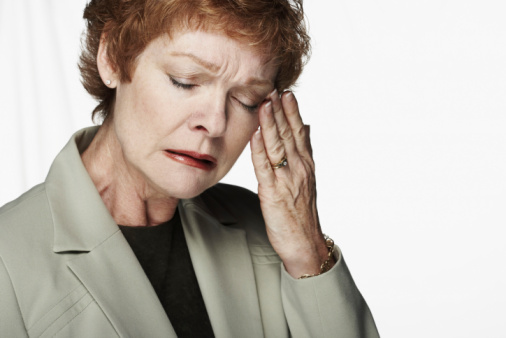
Not only do headaches cause pain, they can also have a negative impact on a person’s quality of life; they can impact personal and professional relationships, as well as potentially contribute to other illnesses. So, in the pursuit of pain relief, it is important for individuals that suffer from headaches to determine the cause(s) of their pain, so that they can be addressed appropriately and headaches don’t come to destroy someone’s life.
The Basics of Headaches
If you suffer from headaches, determining the type of headache you are experiencing is the first step to properly managing it. The three most commonly recognized headache types are:
1. Migraine Headaches
Migraine headaches are a primary headache disorder, and commonly begin during puberty. They are usually recurrent and last a lifetime. Characteristics of migraine headaches include moderate to severe head pain, nausea, and a pulsing type of head pain that is often one-sided. The frequency with which someone might experience a migraine headache differs from person to person; however, a migraine headache is typically made worse with physical activity and can last from hours to days.
2. Tension Headaches
Tension-type headaches are the most common type of headache that people suffer from, often beginning during adolescent years and affecting women more than men. Tension-type headaches can be caused by stress or by muscle irregularities in the neck. People who suffer from these types of headaches often complain of a pressure or tightness around their head.
3. Cluster Headaches
Cluster headaches are relatively uncommon, affecting men more than women. Cluster headaches usually begin in people over the age of 20, and are characterized by severe head pain. Often, this head pain is accompanied by pain around the eye, with tearing and redness.
5 Surprising Causes of Headaches and Neck Pain
While some people can pinpoint the exact cause of their headaches, many are left wondering what is triggering their head pain. This is because, while some causes of head pain seem pretty obvious – persistent loud noise, or muscle tension – many causes of head pain aren’t as commonly recognized as potential triggers of pain. Take a look at these five “less obvious” causes of headaches, that you may not have considered.
- Chewing Gum. Constantly chewing gum places stress on your jaw and the surrounding muscles, which can trigger head pain. To add insult to injury, many of the artificial sweeteners that are found in chewing gum these days can trigger headaches in some people. If you chew gum frequently and suffer from mysterious headaches, you may want to consider opting for a candy that you can suck on as opposed to chewing, and to pay attention to any links or patterns between particular sweeteners you ingest and when you develop your headaches.
- 3D Movies and TV. While this technology is new, innovative and enjoyable for many, it can actually trigger headaches in many people. If you find that your headaches seem to occur around when you use these forms of entertainment, you may have to stick to regular type film instead.
- Weather Changes. Changes in weather systems can trigger migraine headaches in some people. Hot, humid days can trigger head pain for some people, while others are affected by changes in barometric pressure. While you have no control over the weather, you can minimize your risk of suffering from a headache by ensuring that you stay hydrated throughout the day, and by keeping yourself in a cooler climate – especially on hot, muggy days.
- Strong Scents. Being surrounded by strong scents in your environment can trigger head pain. Common culprits for head pain are perfume, paint and flowers. Try eliminating these strong scents from your environment if possible; if you are in a situation in which it can’t be avoided, open nearby windows and go for frequent breathes of outdoor air.
- Poor Posture. You are probably mostly unaware of your habitual standing and sitting posture, but these are likely culprits of head pain. Slouching, hunching over and sitting in a chair with little to no back support can place stress on the muscles in your neck, which can trigger head pain. If you suffer from frequent tension-type headaches, you may want to consider taking a close look at the various postures that you are in throughout the day, and take measures to strengthen your body and adjust them accordingly.
If you suffer from headaches frequently and can’t figure out why, the best thing that you can do is to keep a headache journal. Keep a daily diary of your diet, exercise, weather patterns and stress levels, and then record each time you get a headache. Be sure to include the time, location, severity, duration and treatment. After a while, you’ll hopefully start to notice some distinct patterns in your headaches, helping you make the right lifestyle changes that will get you onto the road of relief and recovery.
Related Reading: Tyramine rich foods can trigger migraines